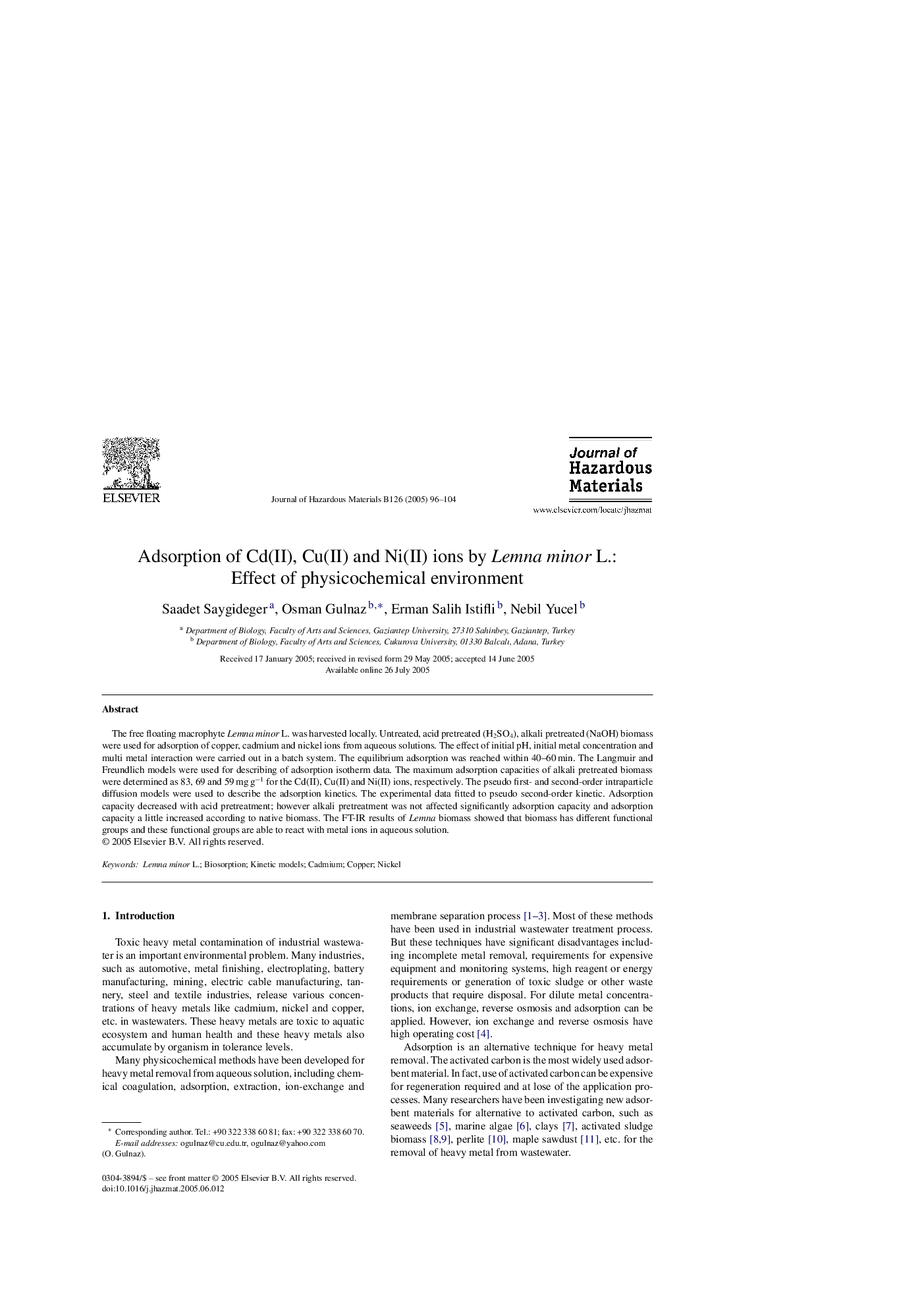| Article ID | Journal | Published Year | Pages | File Type |
|---|---|---|---|---|
| 9674099 | Journal of Hazardous Materials | 2005 | 9 Pages |
Abstract
The free floating macrophyte Lemna minor L. was harvested locally. Untreated, acid pretreated (H2SO4), alkali pretreated (NaOH) biomass were used for adsorption of copper, cadmium and nickel ions from aqueous solutions. The effect of initial pH, initial metal concentration and multi metal interaction were carried out in a batch system. The equilibrium adsorption was reached within 40-60 min. The Langmuir and Freundlich models were used for describing of adsorption isotherm data. The maximum adsorption capacities of alkali pretreated biomass were determined as 83, 69 and 59 mg gâ1 for the Cd(II), Cu(II) and Ni(II) ions, respectively. The pseudo first- and second-order intraparticle diffusion models were used to describe the adsorption kinetics. The experimental data fitted to pseudo second-order kinetic. Adsorption capacity decreased with acid pretreatment; however alkali pretreatment was not affected significantly adsorption capacity and adsorption capacity a little increased according to native biomass. The FT-IR results of Lemna biomass showed that biomass has different functional groups and these functional groups are able to react with metal ions in aqueous solution.
Related Topics
Physical Sciences and Engineering
Chemical Engineering
Chemical Health and Safety
Authors
Saadet Saygideger, Osman Gulnaz, Erman Salih Istifli, Nebil Yucel,
